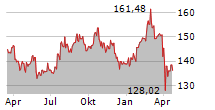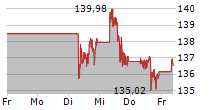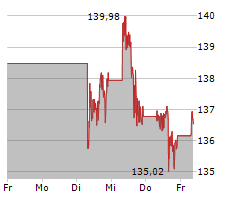NEW BRUNSWICK (dpa-AFX) - Johnson & Johnson (JNJ) shared new findings at the 2025 ASCO Annual Meeting from two Phase 3 studies, PERSEUS and CEPHEUS, highlighting the long-term benefits of a DARZALEX FASPRO (daratumumab and hyaluronidase-fihj)-based quadruplet regimen in newly diagnosed multiple myeloma (NDMM) patients, regardless of transplant eligibility.
In the PERSEUS study (Abstract #7501), transplant-eligible patients who received DARZALEX FASPRO with bortezomib, lenalidomide, and dexamethasone (D-VRd), followed by investigational maintenance with DARZALEX FASPRO and lenalidomide (D-R), showed significantly improved rates of minimal residual disease (MRD) negativity at 10?5 sensitivity. Over 50 percent of patients achieved sustained MRD negativity for at least 24 months, and more than two-thirds maintained MRD negativity at 12 months. This translated to a progression-free survival (PFS) rate of 95.3 percent at 48 months.
Dr. Philippe Moreau, the presenting author, emphasized that the D-VRd plus D-R regimen demonstrated remarkable effectiveness and long-term benefit early in treatment, with deep MRD responses and extended PFS.
At a median follow-up of 47.5 months, the 24-month sustained MRD negativity rate was 55.8 percent with the D-VRd and D-R combo, compared to 22.6 percent with VRd followed by lenalidomide (R) alone. At 12 months, MRD negativity was also significantly higher in the DARZALEX group (64.8 percent vs. 29.7 percent).
Meanwhile, the CEPHEUS study (Abstract #7516) examined transplant-ineligible NDMM patients. The D-VRd regimen led to stronger MRD responses and longer PFS, even in older, frail patients. At a 10?5 threshold, MRD negativity was achieved in 60.4 percent of D-VRd patients compared to 39.3 percent with VRd. At the more sensitive 10?6 level, 45.8 percent of patients on D-VRd showed MRD negativity, versus 26.9 percent on VRd.
At 54 months, 69 percent of D-VRd patients remained progression-free compared to 48 percent in the VRd group. Overall survival also leaned in favor of D-VRd, with improved outcomes after adjusting for COVID-19-related deaths.
A subgroup analysis (Abstract #7529) further revealed that MRD negativity was higher in standard-risk patients treated with D-VRd. High-risk patients showed similar rates across treatment arms.
Dr. Jordan Schecter of Johnson & Johnson noted that across diverse patient groups and risk profiles, DARZALEX-based therapies continue to show consistent, deep responses and strong progression-free survival results-cementing their role in frontline treatment for multiple myeloma.
The safety profile in both studies remained consistent with known data for DARZALEX FASPRO.
JNJ is currently trading at $154.8, or 0.41% lower on the NYSE.
Copyright(c) 2025 RTTNews.com. All Rights Reserved
Copyright RTT News/dpa-AFX
© 2025 AFX News




